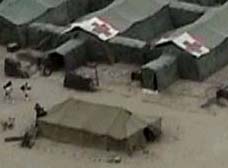2006.03.01: March 1, 2006: Headlines: COS - Kenya: Food: The Register-Guard: Peace Corps Volunteer Sarah Schrock eats ugali in Kenya
Peace Corps Online:
Directory:
Kenya:
The Peace Corps in Kenya:
2006.03.01: March 1, 2006: Headlines: COS - Kenya: Food: The Register-Guard: Peace Corps Volunteer Sarah Schrock eats ugali in Kenya
Peace Corps Volunteer Sarah Schrock eats ugali in Kenya
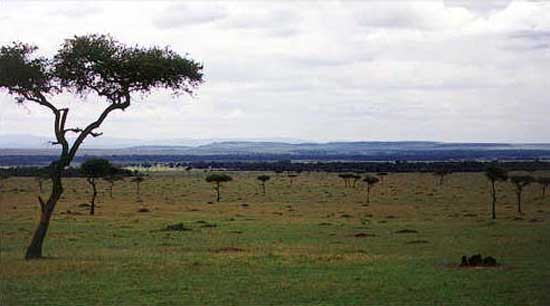
The common traveler to Kenya surely tries the beloved ugali, a corn mash made from white corn (maize). Ugali takes on different forms throughout Africa with different names, but this corn mash serves as the basic starch for most of Sub-Saharan Africa. I like to describe it as a cross between cream of wheat and polenta, only it is dense enough to cut with a knife and eat with your fingers.
Peace Corps Volunteer Sarah Schrock eats ugali in Kenya
Bowlfuls of borsch
Food Lore From The Peace Corps: Adventurous eating is part of the job for volunteers in far corners of the world
By Jennifer Snelling
For The Register-Guard
Published: Wednesday, March 1, 2006
As Peace Corps celebrates its 45th anniversary this week, some local volunteers share their experiences and recipes:
Not all ugali is equal
Sarah Schrock: Kenya 2000-2002
The common traveler to Kenya surely tries the beloved ugali, a corn mash made from white corn (maize). Ugali takes on different forms throughout Africa with different names, but this corn mash serves as the basic starch for most of Sub-Saharan Africa. I like to describe it as a cross between cream of wheat and polenta, only it is dense enough to cut with a knife and eat with your fingers.
But not all ugali is made equal. It takes a discerning eye and adventurous appetite to decipher the subtleties between ugali, and once you have mastered this, you intimately understand the rich diversity of Kenya.
Ugali in my village was served with everything, but most commonly with local bitter greens picked from the wild.
During tough times in Kenya, U.N. food relief programs unload bags of yellow maize to famine areas. But yellow maize doesn't make very good ugali, because it lacks some of the protein and oils of the white maize.
Traditionally, before Portuguese traders brought maize from the Americas to Africa, ugali was made with millet and sorghum. Ugali prepared with these indigenous grains renders it a dark brown, and it is referred to as "black ugali."
In the area of Kenya where I served, black ugali was a rare specialty item served only to the wazee (elders). Sometimes it was also served to me out of respect. How could I turn it down? I couldn't.
In fact, I became so accustomed to eating ugali every day, I started to feel as Kenyans do ... if I hadn't had my ugali for the day, I hadn't eaten.
Sarah Schrock is a graduate student in landscape architecture at the University of Oregon and a Peace Corps recruiter.
Recipes from volunteers
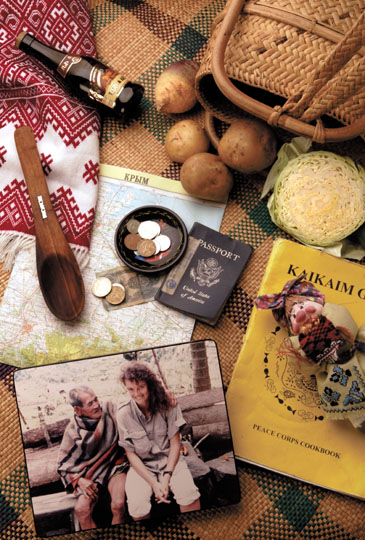
Peace Corps volunteers including Maggie Keenan (shown in photo at lower left taken while she was in the Philippines) learn much about an area's culture through the sharing of food. Photo: Paul Carter
The Register-Guard
Ugali na Sukama Wiki
From Sarah Schrock, Kenya 2000-02.
For the Ugali:
1 cup white maize (corn) flour (do not use corn meal or masa flour)
1 cup water
In a medium sauce pan boil water. Slowly add some flour stirring constantly until you get the consistency of porridge. Reduce heat and simmer 30 seconds, do not let burn. Add remaining flour until a thick, doughlike consistency forms, stirring constantly. Use the spatula to mash the dough until evenly mixed. A thin layer of starch should form on the pan and begin to cook. At this point, form into a round loaf and let steam for 3 minutes in pan - do not burn. Remove from heat and let stand a few minutes to steam and cool off. Cut with knife to serve.
For the Sukami Wiki (means to "push the week"):
1 bundle of collard greens or kale
2 Roma tomatoes
1/4 cup chopped onion or 2 green onions
Oil or butter
Salt
Remove the stems from the leaves of the collard greens or kale. Layer the leaves and roll into a log. Fold the log and hold in left hand. With a sharp knife in right hand, slice off very thin strands of leaf (similar to chopped spinach).
In a sauce pan, fry the onions and tomatoes until translucent and saucy. Add a couple of tablespoons of water and place the chopped collards in the pan to steam. Stir occasionally and don't let burn.
The greens will cook down. Add salt to taste.
For extra flavor, cook with a bouillon cube.
Serve Ugali with Sukami Wiki in a bowl and eat with your hands for a truly authentic Kenyan meal.
When this story was posted in March 2006, this was on the front page of PCOL:





Peace Corps Online The Independent News Forum serving Returned Peace Corps Volunteers
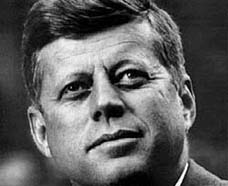 | March 1, 1961: Keeping Kennedy's Promise
On March 1, 1961, President John F. Kennedy issues Executive Order #10924, establishing the Peace Corps as a new agency: "Life in the Peace Corps will not be easy. There will be no salary and allowances will be at a level sufficient only to maintain health and meet basic needs. Men and women will be expected to work and live alongside the nationals of the country in which they are stationed--doing the same work, eating the same food, talking the same language. But if the life will not be easy, it will be rich and satisfying. For every young American who participates in the Peace Corps--who works in a foreign land--will know that he or she is sharing in the great common task of bringing to man that decent way of life which is the foundation of freedom and a condition of peace. " |
 | The Peace Corps Library
The Peace Corps Library is now available online with over 40,000 index entries in 500 categories. Looking for a Returned Volunteer? Check our RPCV Directory. New: Sign up to receive PCOL Magazine, our free Monthly Magazine by email. Like to keep up with Peace Corps news as it happens? Sign up to recieve a daily summary of Peace Corps stories from around the world. |
 | Paid Vacations in the Third World?
Retired diplomat Peter Rice has written a letter to the Wall Street Journal stating that Peace Corps "is really just a U.S. government program for paid vacations in the Third World." Director Vasquez has responded that "the small stipend volunteers receive during their two years of service is more than returned in the understanding fostered in communities throughout the world and here at home." What do RPCVs think? |
 | RPCV admits to abuse while in Peace Corps
Timothy Ronald Obert has pleaded guilty to sexually abusing a minor in Costa Rica while serving there as a Peace Corps volunteer. "The Peace Corps has a zero tolerance policy for misconduct that violates the law or standards of conduct established by the Peace Corps," said Peace Corps Director Gaddi H. Vasquez. Could inadequate screening have been partly to blame? Mr. Obert's resume, which he had submitted to the Peace Corps in support of his application to become a Peace Corps Volunteer, showed that he had repeatedly sought and obtained positions working with underprivileged children. Read what RPCVs have to say about this case. |
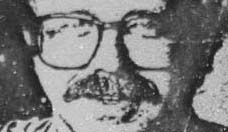 | Why blurring the lines puts PCVs in danger
When the National Call to Service legislation was amended to include Peace Corps in December of 2002, this country had not yet invaded Iraq and was not in prolonged military engagement in the Middle East, as it is now. Read the story of how one volunteer spent three years in captivity from 1976 to 1980 as the hostage of a insurrection group in Colombia in Joanne Marie Roll's op-ed on why this legislation may put soldier/PCVs in the same kind of danger. Latest: Read the ongoing dialog on the subject. |
 | PC establishes awards for top Volunteers
Gaddi H. Vasquez has established the Kennedy Service Awards to honor the hard work and service of two current Peace Corps Volunteers, two returned Peace Corps Volunteers, and two Peace Corps staff members. The award to currently serving volunteers will be based on a demonstration of impact, sustainability, creativity, and catalytic effect. Submit your nominations by December 9. |
 | Friends of the Peace Corps 170,000 strong
170,000 is a very special number for the RPCV community - it's the number of Volunteers who have served in the Peace Corps since 1961. It's also a number that is very special to us because March is the first month since our founding in January, 2001 that our readership has exceeded 170,000. And while we know that not everyone who comes to this site is an RPCV, they are all "Friends of the Peace Corps." Thanks everybody for making PCOL your source of news for the Returned Volunteer community. |
Read the stories and leave your comments.

Some postings on Peace Corps Online are provided to the individual members of this group without permission of the copyright owner for the non-profit purposes of criticism, comment, education, scholarship, and research under the "Fair Use" provisions of U.S. Government copyright laws and they may not be distributed further without permission of the copyright owner. Peace Corps Online does not vouch for the accuracy of the content of the postings, which is the sole responsibility of the copyright holder.
Story Source: The Register-Guard
This story has been posted in the following forums: : Headlines; COS - Kenya; Food
PCOL31861
58












